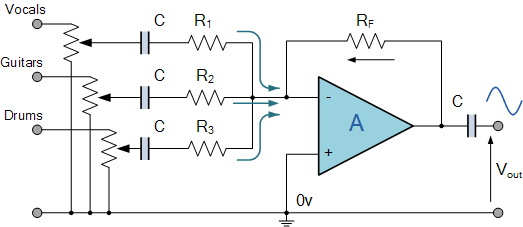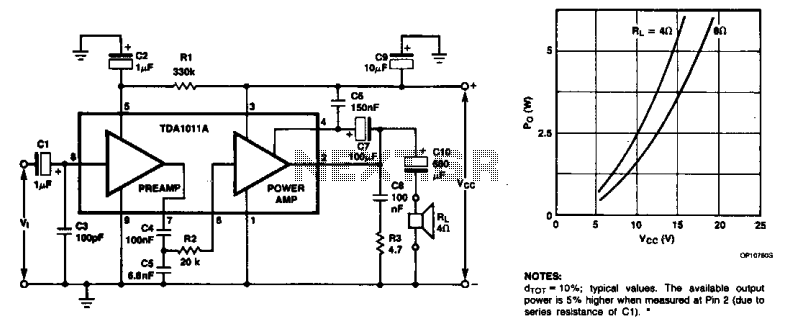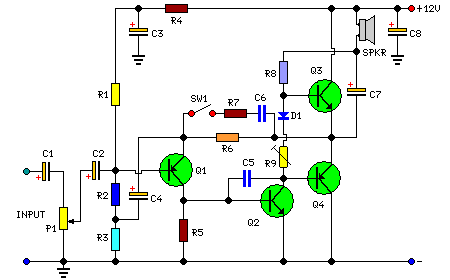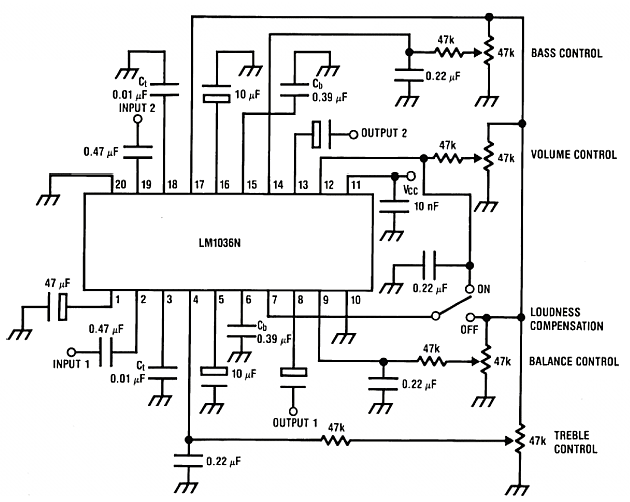
Explanation Regarding Audio Mixer Circuits

A newcomer to the forum is seeking assistance with DIY electronic circuits and lacks a formal background in electrical engineering.
The inquiry indicates a desire to learn and engage with the community on topics related to DIY electronic circuits. For individuals in similar situations, it is recommended to start with foundational concepts in electronics, such as understanding basic components like resistors, capacitors, diodes, and transistors.
A basic electronic circuit can be constructed using a battery, a resistor, and an LED (light-emitting diode). In this simple circuit, the battery serves as the power source, providing the necessary voltage. The resistor is used to limit the current flowing through the LED, preventing it from burning out due to excessive current.
The schematic representation of this circuit would include the battery symbol, a resistor symbol, and the LED symbol, with appropriate connections made to indicate the flow of current. The positive terminal of the battery connects to one end of the resistor, while the other end of the resistor connects to the anode of the LED. The cathode of the LED then connects back to the negative terminal of the battery, completing the circuit.
This introductory circuit serves as an excellent starting point for understanding more complex electronic designs. As knowledge and skills develop, one can explore additional components and circuit configurations, gradually building a more comprehensive understanding of electronics. Engaging with the forum by asking questions and sharing projects can further enhance the learning experience.Hi all, I am very new to this forum as well as DIY electronic circuits. I am not an electrical engineering student nor I have sufficient background (I .. 🔗 External reference
The inquiry indicates a desire to learn and engage with the community on topics related to DIY electronic circuits. For individuals in similar situations, it is recommended to start with foundational concepts in electronics, such as understanding basic components like resistors, capacitors, diodes, and transistors.
A basic electronic circuit can be constructed using a battery, a resistor, and an LED (light-emitting diode). In this simple circuit, the battery serves as the power source, providing the necessary voltage. The resistor is used to limit the current flowing through the LED, preventing it from burning out due to excessive current.
The schematic representation of this circuit would include the battery symbol, a resistor symbol, and the LED symbol, with appropriate connections made to indicate the flow of current. The positive terminal of the battery connects to one end of the resistor, while the other end of the resistor connects to the anode of the LED. The cathode of the LED then connects back to the negative terminal of the battery, completing the circuit.
This introductory circuit serves as an excellent starting point for understanding more complex electronic designs. As knowledge and skills develop, one can explore additional components and circuit configurations, gradually building a more comprehensive understanding of electronics. Engaging with the forum by asking questions and sharing projects can further enhance the learning experience.Hi all, I am very new to this forum as well as DIY electronic circuits. I am not an electrical engineering student nor I have sufficient background (I .. 🔗 External reference





